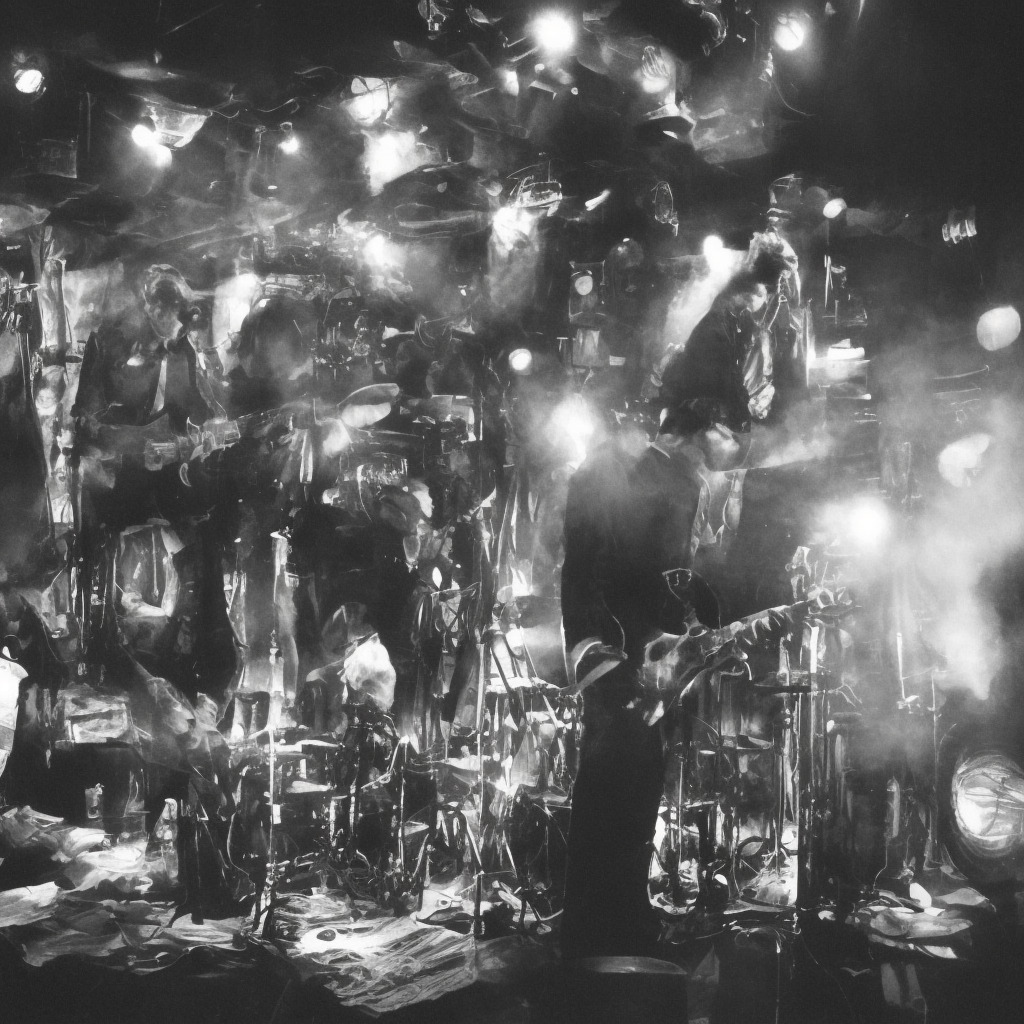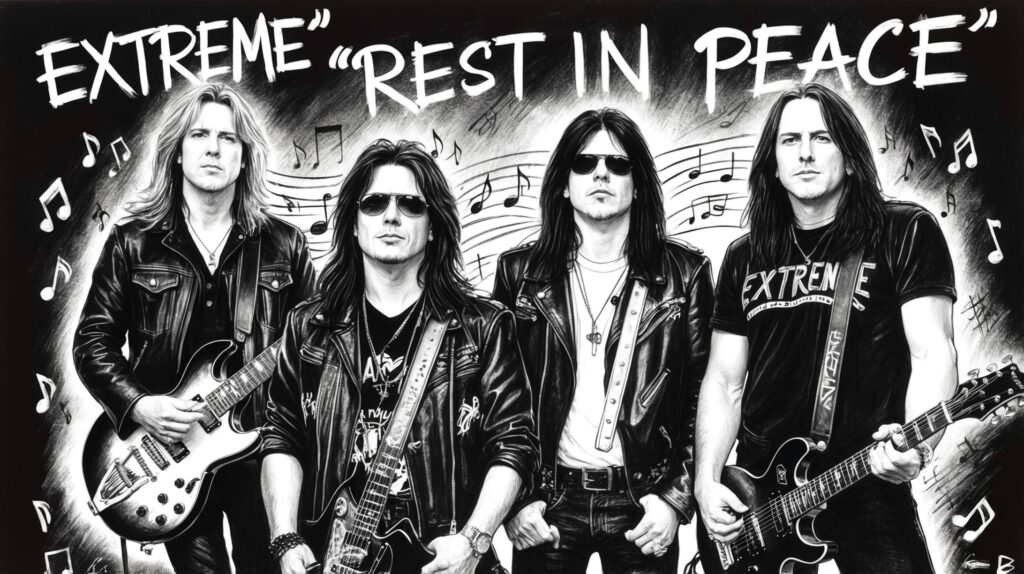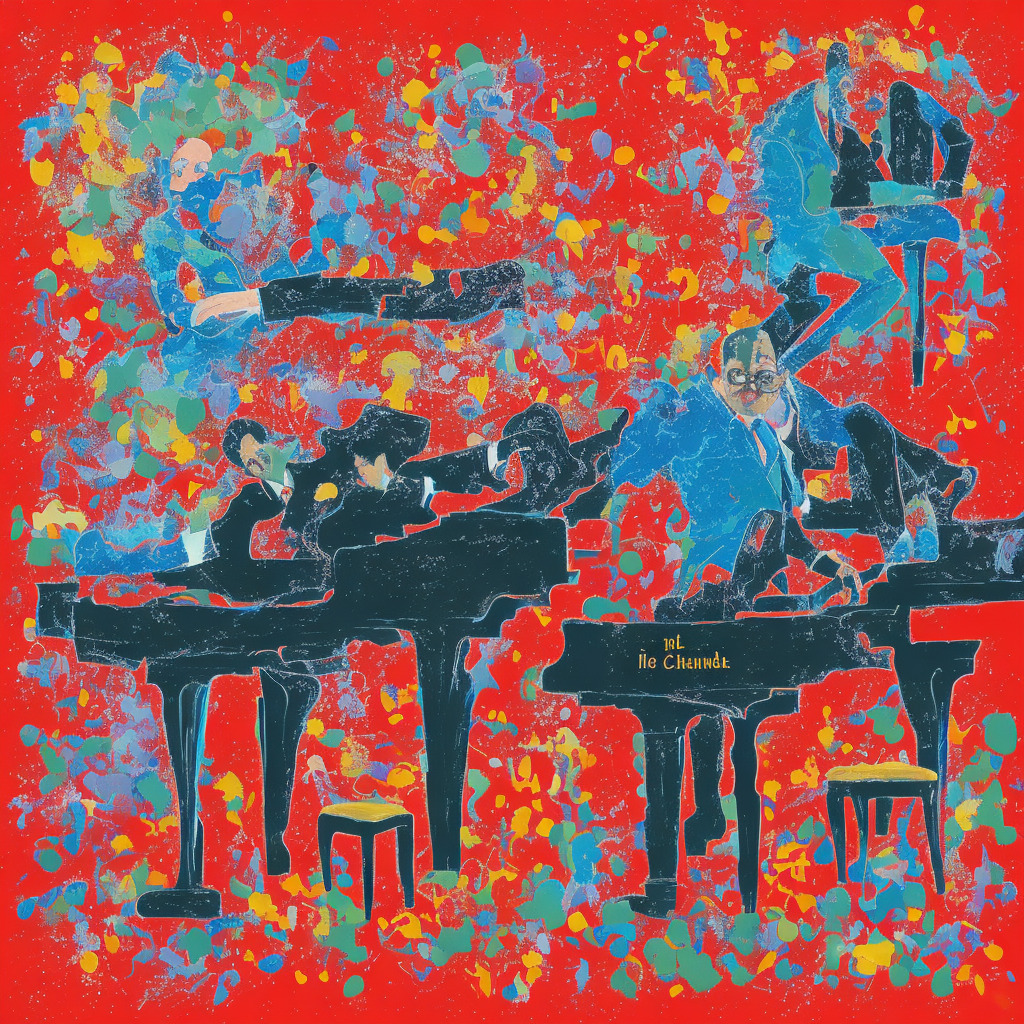🎸Did you know? “Boom Boom” by blues legend John Lee Hooker was inspired by a flirty 💃 encounter at a Detroit bar in 1961! Groove on, Hooker fans! 🎵 #BluesTrivia #JohnLeeHooker #BoomBoom #ClassicBlues #MusicFact Read about it: tinyurl.com/4den9b99
Exploring the Timeless Classic of a Blues Legend
“John Lee Hooker’s ‘Boom Boom’: An Everlasting Ode to the Soul of Blues, Reverberating Through Generations of Music Lovers.”
As one of the most influential and widely-recognized blues musicians in history, John Lee Hooker is a legend who has left an indelible mark on the world of music. With a career spanning more than six decades, Hooker was a prolific songwriter and performer who relentlessly honed his craft, and along the way, released an astonishing number of albums that brought the blues genre to new heights. One of his most iconic songs “Boom Boom” remains a testament to his exceptional prowess in creating authentic, soul-stirring blues tunes that resonate deeply with people to this day.
Born in Mississippi in 1917, Hooker absorbed the energy of the southern Delta blues scene and started developing his own unique style early on. His foot-tapping, rhythmic sound infused with the heartache and sorrow ever-present in the lyrics of his songs made him stand out among other blues artists of his time. The release of “Boom Boom” in 1962 only solidified his stature in the blues community, both as a great performer and a gifted songwriter.
“Boom Boom” exemplifies the quintessential sound and feel of the blues that John Lee Hooker built his career upon. The song is driven by Hooker’s distinctive voice and guitar work, accompanied by a powerful bass line and punctuated, syncopated drums. As the song progresses, his raw, emotive vocal delivery perfectly captures the essence of the blues, belting out the memorable line “Boom boom boom boom” with a conviction that can only come from a true master of the genre.
While Hooker’s music has received widespread recognition, it’s worth noting that some critics argue his style didn’t evolve significantly over his career, which might have limited his appeal to broader audiences. However, others appreciate this consistency as it showcases the raw, unadulterated authenticity of his craft, never losing sight of the roots from which he emerged.
John Lee Hooker’s illustrious career earned him numerous accolades and awards, including his induction into the Blues Hall of Fame in 1980 and the Rock and Roll Hall of Fame in 1991. His impact on the world of music is undeniable, with countless artists citing him as a key influence on their work. Additionally, in 1999, he received the Grammy Lifetime Achievement Award, a reflection of his unwavering dedication to his art and a fitting tribute to a musical titan who left an extraordinary legacy.
In conclusion, John Lee Hooker, and his timeless classic “Boom Boom,” stand as a cornerstone of blues music history. His authentic sound and unparalleled dedication to the genre have inspired generations of artists and continue to find a special place in the hearts of music lovers all around the world. As a music blogger, it’s important to celebrate and appreciate the remarkable contribution of such a legendary figure, who so passionately and consistently captured the essence of the blues.
Charting the Success
“From a modest chart debut to enduring appeal, John Lee Hooker’s “Boom Boom” proves that timeless grooves and infectious energy can create a lasting musical legacy.”
The timeless classic “Boom Boom” by John Lee Hooker was released on April 5, 1962, as a 7″ vinyl single. The song’s chart performance is an interesting tale, as it initially didn’t make a huge splash on the charts. However, over time, it gained recognition and became one of Hooker’s most well-known tracks.
Upon its release, “Boom Boom” entered the Billboard Hot 100 chart on June 9, 1962, debuting at a modest No. 92. It slowly climbed the charts, peaking at No. 60 on July 14, 1962. Although it didn’t crack the top 50, the song’s undeniable groove and infectious energy kept it in the public’s consciousness.
Interestingly, the song found more success in the UK. In 1992, a re-recorded version of “Boom Boom” was used in a prominent television commercial for a British jeans brand. This led to the song re-entering the UK Singles Chart, peaking at an impressive No. 16 position. This moment of resurgence helped solidify “Boom Boom” as a staple in John Lee Hooker’s repertoire and further established his legacy in the world of music.
Another notable chart achievement for “Boom Boom” came in 1995 when British rock band The Animals, who were heavily influenced by Hooker’s music, released their own rendition of the song. Their cover version of “Boom Boom” managed to reach No. 43 on the UK Singles Chart, a testament to the song’s enduring popularity and appeal.
To this day, “Boom Boom” continues to be a favorite among music enthusiasts and is often included in various “Best Of” lists, showcasing the song’s lasting impact on the music world. Despite its initial lukewarm chart success, “Boom Boom” has truly stood the test of time and remains a significant piece of John Lee Hooker’s illustrious career.
Unraveling the Essence of “Boom Boom”
“Boom boom boom boom
I’m gonna shoot you right down,
Right offa your feet
Take you home with me,
Put you in my house
Boom boom boom boom
A-haw haw haw haw
Hmmm hmmm hmmm hmmm
Hmmm hmmm hmmm hmmm
I love to see you strut,
Up and down the floor
When you talking to me,
That baby talk
I like it like that
Whoa, yeah!
Talk that talk, walk that walk
When she walk that walk,
And talk that talk,
And whisper in my ear,
Tell me that you love me
I love that talk
When you talk like that,
You knocks me out,
Right off of my feet
Hoo hoo hoo
Whoa, yeah!
Talk that talk, walk that walk
When she walk that walk,
And talk that talk,
And whisper in my ear,
Tell me that you love me
I love that talk
When you talk like that,
You knocks me out,
Right off of my feet
Hoo hoo hoo
Talk that talk, walk that walk
Whoa, yeah!”
The lyrics of “Boom Boom” by John Lee Hooker are a quintessential representation of the blues music genre, filled with raw emotion and an irresistible groove. Written in 1961, the song captures the spirit of the time and the events of the era. The early 1960s were a period of significant social and cultural change, marked by the Civil Rights Movement, the rise of rock ‘n’ roll, and the burgeoning counterculture. Within this context, “Boom Boom” serves as a powerful anthem of love and desire, evoking a sense of liberation and freedom that resonated with audiences both then and now.
The lyrics paint a vivid picture of a man who is completely captivated by a woman’s allure. Hooker uses the phrase “boom boom boom boom” as an onomatopoeic metaphor for the pounding of his heart, evoking the intensity of his attraction. The repetition of this phrase throughout the song creates a hypnotic rhythm that mirrors the enthralling nature of the love he describes. With lines like “When she walk that walk, and talk that talk, and whisper in my ear, tell me that you love me,” the song speaks to the enchanting power of a lover’s words and actions. Hooker’s earthy voice and infectious groove further amplify the song’s magnetic appeal, evoking the smoky atmosphere of a blues club and the irresistible pull of the dance floor.
Overall, the lyrics of “Boom Boom” capture a moment in time and a feeling that transcends eras, tapping into the universal themes of love, desire, and the transformative power of music. As such, the song stands as a testament to John Lee Hooker’s enduring influence as one of the most iconic figures in the history of blues music.
The Visual Journey of “Boom Boom”
Discover the captivating visual journey of John Lee Hooker’s “Boom Boom” through iconic live performances, fan-made tributes, and inspiring covers, all testaments to the enduring blues legend’s legacy.
While the song “Boom Boom” by the legendary blues musician John Lee Hooker doesn’t have an official music video, there exists an iconic live performance of the song recorded at the Newport Jazz Festival in 1960, which has gained significant attention on YouTube. Over the years, this live performance video has captured the hearts of blues enthusiasts and has amassed hundreds of thousands of views. Moreover, this performance serves as a delightful treat for John Lee Hooker fans who can witness the charisma and palpable energy that only a live show can convey.
However, it is worth noting some creative fan-made videos and tributes dedicated to the song “Boom Boom.” These videos showcase the impact of the song on the listeners and the music community, as it has inspired various artistic expressions over the years. Interestingly, some of these fan-made videos have incorporated vintage footage, photographs, and animations to create a visual representation that complements the raw and powerful sound of the song.
One such tribute video to John Lee Hooker’s “Boom Boom” features a compilation of black and white photographs of the blues legend throughout his career, set to the tune of the song. This particular video has garnered a respectable number of views, proving that fans have appreciated the creative efforts of their fellow Hooker enthusiasts in paying homage to the iconic musician.
In addition to fan-made videos, there have been numerous covers of “Boom Boom” uploaded by aspiring musicians on YouTube. These talented artists have paid tribute to John Lee Hooker by giving their rendition of the famous song, showcasing various musical styles and interpreting it with their unique flair. Indeed, the song’s popularity has transcended time and has influenced generations of musicians.
Overall, the visual journey of “Boom Boom” might not be accompanied by a high-budget, official music video, but the song’s substantial impact on fans and musicians has generated a plethora of creative and heartfelt tributes. These fan-made videos, covers, and homages stand as a testament to the enduring legacy of John Lee Hooker and his contribution to the world of blues music.
The Man Behind the Music: John Lee Hooker
John Lee Hooker, a legendary figure in the world of blues, was the mastermind behind the infectious hit “Boom Boom.” Born in Mississippi in 1917, Hooker spent his early years absorbing the rich musical heritage of the region before moving north, eventually settling in Detroit. It was in the Motor City where he began establishing himself as a prolific songwriter and performer, crafting his signature “talking boogie” style that would go on to influence generations of blues and rock musicians.
Apart from “Boom Boom,” John Lee Hooker is also known for composing other iconic tracks such as “Boogie Chillen'” and “Crawling King Snake.” Both songs showcase Hooker’s raw, hypnotic guitar style and distinctively deep, growling vocals. Throughout his lengthy career, Hooker released over 100 albums and won numerous awards, including four Grammy Awards. By the time of his passing in 2001, John Lee Hooker had cemented his legacy as one of the most important and influential blues musicians of all time.
Awards, Accolades, and Appearances
“Boom Boom”: A timeless classic, conquering Blues Hall of Fame, Grammy recognition, TV, film, and gaming domains, inspiring generations and leaving an indelible mark on the global music landscape.
“Boom Boom” achieved great success since its initial release and it continues to hold its iconic status in the music world. The song was inducted into the Blues Foundation Hall of Fame in 2009, under the “classic of blues recording” category, as a testament to its immense influence on the genre. In 2018, the song was also included in the Grammy Hall of Fame, recognizing its lasting significance and impact on the music industry.
Over the years, “Boom Boom” has made numerous appearances in various forms of media, further solidifying its cultural relevance. It has been featured in popular TV shows like “The Sopranos” and “Twin Peaks”, providing a fitting backdrop to the gritty and atmospheric storytelling of these critically acclaimed series. The song has also appeared in movies such as the 1988 cult classic “The Forbidden Dance” and the 2010 crime drama “The Killer Inside Me”, showcasing its timeless appeal and versatility.
The world of video games hasn’t been immune to the allure of “Boom Boom” either. The gritty, guitar-driven sound of the track made it a perfect fit for the edgy action-adventure game “Mafia III”, where it can be heard on the in-game radio station.
“Boom Boom” has also inspired a wide array of cover versions over the years, further demonstrating its enduring influence. Notable covers include the 1965 rendition by British rock icons The Animals, which introduced the song to a new generation of fans and helped boost its popularity internationally. Additionally, blues-rock powerhouse ZZ Top paid tribute to Hooker’s classic on their 1992 album “Greatest Hits”, adding their signature Texas-boogie twist to the mix.
As “Boom Boom” continues to resonate with audiences and make appearances in various media, it’s safe to say that John Lee Hooker’s iconic hit has left an indelible mark on the music landscape, and its legacy will continue to inspire and entertain for generations to come.
Dissecting the Musical Elements
Diving deeper into the musical structure of “Boom Boom,” one can truly appreciate the genius of John Lee Hooker’s blues masterpiece. The song is written in the key of E major, and the chords follow a classic 12-bar blues progression. The 12-bar blues progression is a hallmark of the genre, and Hooker’s use of it provides a solid foundation for the song’s infectious groove.
The chord structure of “Boom Boom” consists of three main chords: the I chord (E), the IV chord (A), and the V chord (B). The song follows a standard 12-bar blues progression, with the chords arranged in a pattern of E-E-E-E-A-A-E-E-B-A-E-E. This pattern repeats throughout the entirety of the song, providing a reliable and familiar structure for listeners to latch onto.
The tempo of “Boom Boom” is moderate, clocking in at around 82 beats per minute (BPM). This tempo is ideal for the song’s laid-back, yet driving feel, and it allows Hooker’s vocals and guitar work to take center stage. The rhythm section, comprised of drums and bass, keeps a steady beat throughout the song, providing a strong backbone for the rest of the instrumentation.
One of the most distinctive aspects of “Boom Boom” is its syncopated rhythm, which gives the song its signature “swing” feel. Hooker’s guitar work employs a technique known as “palm muting,” which involves resting the palm of the picking hand on the strings near the bridge while strumming or picking. This technique produces a muted, staccato sound that is characteristic of blues and jazz guitar. The syncopated rhythm is further emphasized by the bass line, which follows the same pattern as the guitar, but an octave lower.
Another noteworthy aspect of “Boom Boom” is its use of call-and-response, a common feature in traditional blues music. The call-and-response structure can be seen in the way Hooker’s vocals interact with his guitar riffs, as well as in the interplay between the lead guitar and the rhythm section. This conversational quality gives the song a dynamic, engaging feel that draws listeners in and invites them to participate in the musical dialogue.
In conclusion, the musical structure of “Boom Boom” is a testament to John Lee Hooker’s mastery of the blues genre. By combining a classic 12-bar blues progression with a moderate tempo, syncopated rhythms, and call-and-response elements, Hooker creates a timeless groove that is both captivating and memorable. It is this unique blend of traditional and innovative elements that has made “Boom Boom” an enduring classic in the world of blues music.







